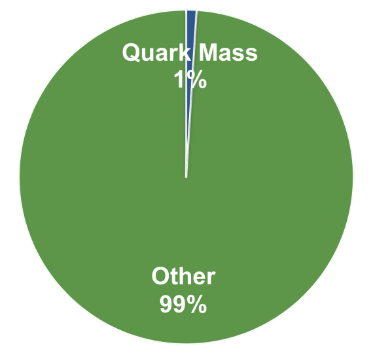The origin of the proton’s mass is a hot topic in nuclear science, highlighted in the 2015 NSAC Long Range Plan. The emergence of the proton mass within the context of QCD is not yet understood. This mechanism can be studied through quarkonium production near threshold, providing for a novel avenue to explore the gluonic structure of nucleons and nuclei and features of the strong force such as the color Van der Waals force.
Jefferson Lab in the 12 GeV era is the ideal laboratory to study J/ψ near threshold. Our J/ψ-007 experiment in Hall C will provide for a first high-precision measurement of the threshold area, while also providing a definite answer on the existence of the five-quark resonances discovered by LHCb. With the theory group and collaborators worldwide, we strive to develop the necessary theoretical framework to rigorously link experimental observables to the emergence of mass. Looking forward, understanding the emergence of mass in QCD requires a new generation of experiments to study the electroproduction of quarkonium, only possible at Jefferson Lab with SoLID and with the EIC, where we can explore both J/ψ and Y production. Additionally, we can access quantities related to mass generation through pion and kaon Drell-Yan scattering experiments. Finally, at the EIC, we will measure the proton’s matter distribution by mapping the gluon distribution in 3D using high-energy quarkonium production.
